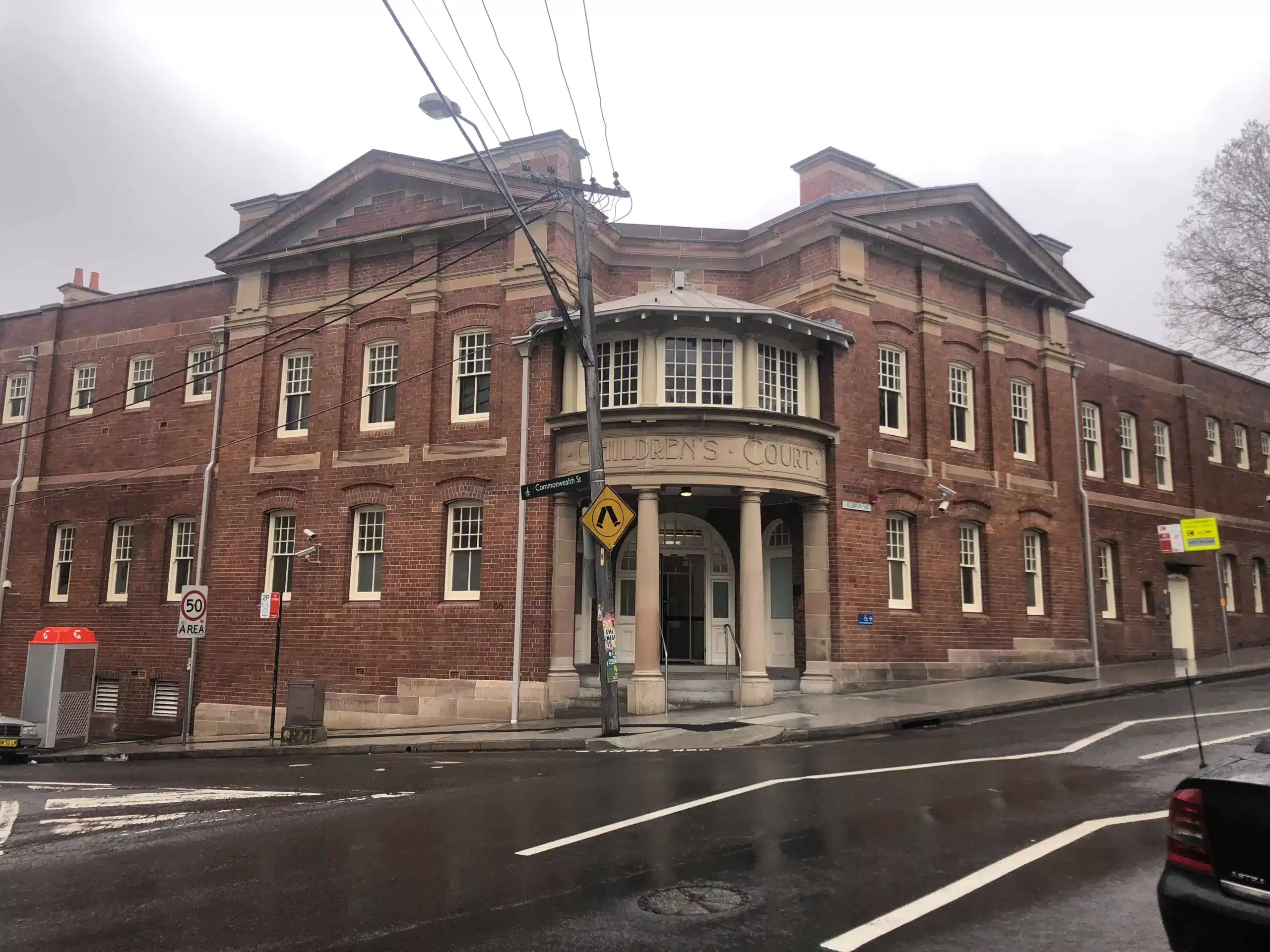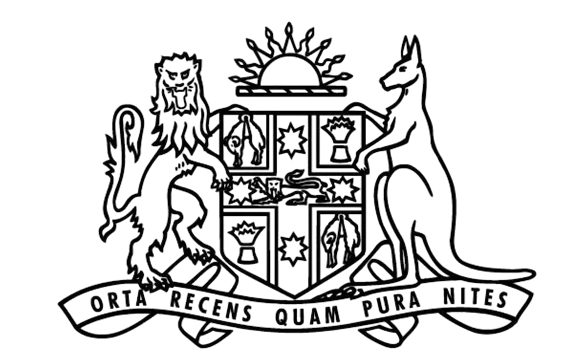The Children’s Court of New South Wales plays a vital role in our state’s justice system, handling cases involving young people under 18. At Jameson Law, we understand the unique challenges and sensitivities surrounding youth justice.
This guide aims to provide a comprehensive overview of the Children’s Court, its processes, and the outcomes it can deliver. We’ll explore the court’s jurisdiction, key procedures, and the principles that guide its decision-making.
What Does the Children’s Court of NSW Do?
Jurisdiction and Purpose
The Children’s Court of New South Wales is a specialized court that handles legal matters involving young people under 18 years old. This court operates differently from adult courts, focusing on balancing accountability with rehabilitation and ensuring all the people who have an impact on the child’s welfare have an input.
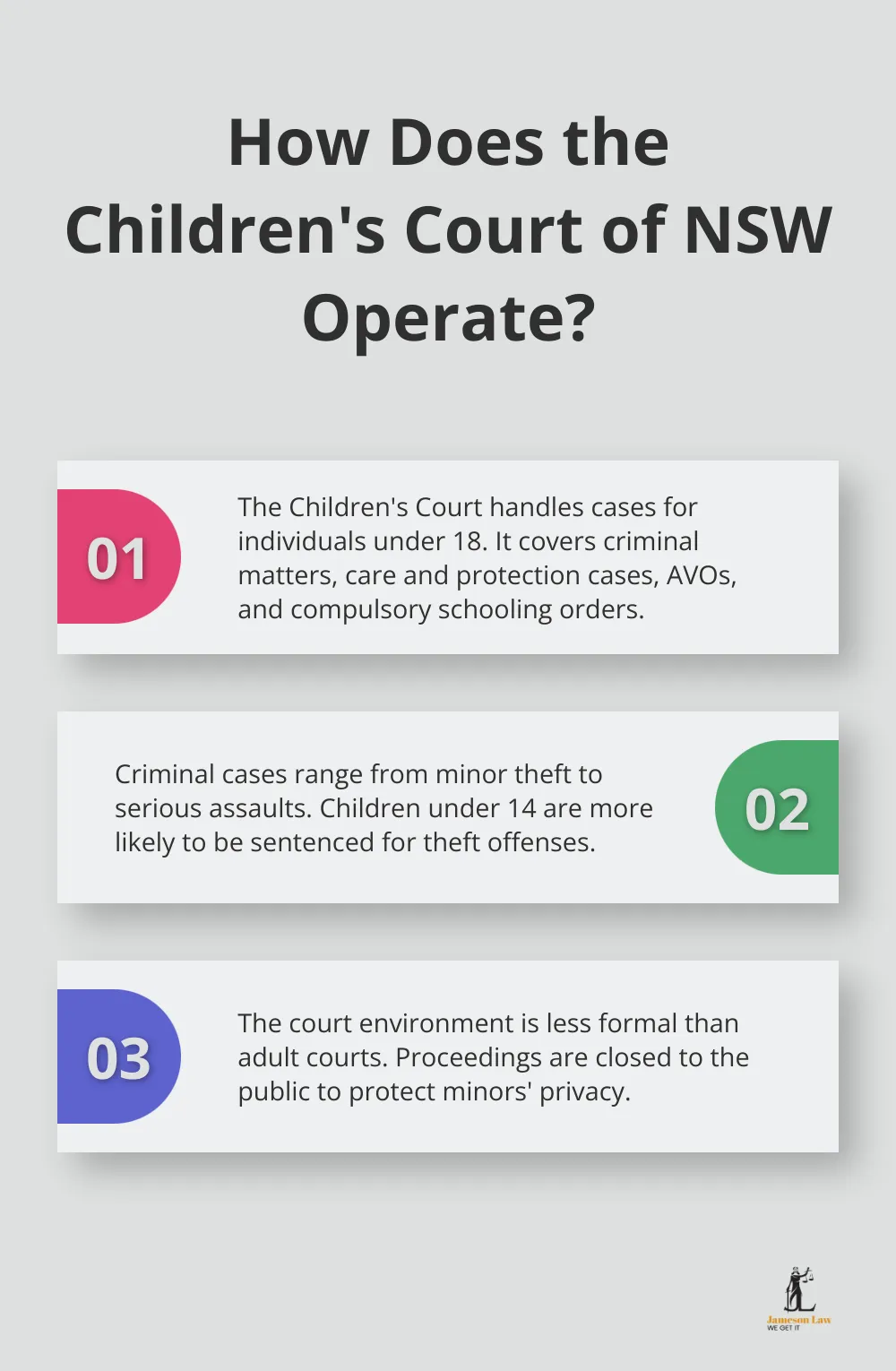
The court has jurisdiction over criminal cases where the alleged offence occurred when the person was under 18. It also addresses care and protection matters for children at risk of harm. The court recognizes that young people have different needs and capacities compared to adults.
In criminal matters, the court hears and determines summary offences and conducts committal proceedings for more serious indictable offences. For care and protection cases, the court makes orders about a child’s living arrangements, contact with parents, and other welfare issues.
Types of Cases
The Children’s Court handles a diverse range of cases. Criminal matters can include everything from minor theft to serious assaults. Children aged under 14 were much more likely to be sentenced for theft offences such as stealing, shoplifting, and unlawful use of a motor vehicle.
Care and protection cases involve situations where concerns arise about a child’s safety or well-being. These can include cases of neglect, abuse, or situations where parents cannot care for their children due to issues like substance abuse or mental health problems.
The court also addresses apprehended violence order (AVO) applications involving young people and compulsory schooling orders for children who do not attend school regularly.
Key Legislation
Several key pieces of legislation govern the Children’s Court operations:
- Children (Criminal Proceedings) Act 1987: This act governs criminal matters.
- Children and Young Persons (Care and Protection) Act 1998: This legislation covers care and protection cases.
- Young Offenders Act 1997: This act establishes procedures for dealing with children who commit certain offences through the use of youth justice conferences, cautions and warnings.
- Children’s Court Act 1987: This legislation establishes the court and outlines its powers.
Understanding these laws is essential for anyone involved in Children’s Court proceedings. Legal professionals ensure their clients are fully informed about the legal framework that applies to their case.
Court Environment and Procedures
The Children’s Court environment differs significantly from adult courts. The setting is less formal, aiming to create a more comfortable atmosphere for young people. Proceedings are closed to the public to protect the privacy of minors involved.
Young people can bring support persons to court, which enhances their comfort and understanding of the process. This approach reflects the court’s commitment to creating a supportive environment while maintaining the necessary legal procedures.
The next chapter will explore the specific processes and procedures followed in the Children’s Court, including how cases are initiated and the roles of different parties involved in the proceedings.
How Does the Children’s Court Process Work?
Initiating a Case
The Children’s Court of NSW follows unique procedures to address the specific needs of young people in the justice system. Cases typically start when police file a Court Attendance Notice (CAN) for criminal matters or when the Department of Communities and Justice files an application for care and protection cases. For criminal matters, young people may receive a warning, caution, or referral to a Youth Justice Conference as alternatives to court proceedings.
Between 2023 and 2024, the youth diversion rate fell from 51.3% to 46.8%. This decline is attributed to two main factors, highlighting the changing landscape of youth justice interventions.
Key Players in the Court
The Children’s Court involves several key parties:
- Magistrates: Specially trained judicial officers who preside over cases and make decisions.
- Children’s Legal Representatives: Lawyers who represent the interests of young people in court proceedings. These representatives are required to demonstrate advanced knowledge of different modes of representation in care and protection cases for children.
- Youth Justice Officers: These professionals provide support and information to young people and their families throughout the court process.
- Department of Communities and Justice Representatives: They present evidence in care and protection matters.
Court Hearings and Conferences
Hearings in the Children’s Court maintain a less formal atmosphere than adult courts. For criminal matters, if a young person pleads not guilty, the court will set a date for a defended hearing. In care and protection cases, the court may order a dispute resolution conference to try and reach an agreement without a formal hearing.
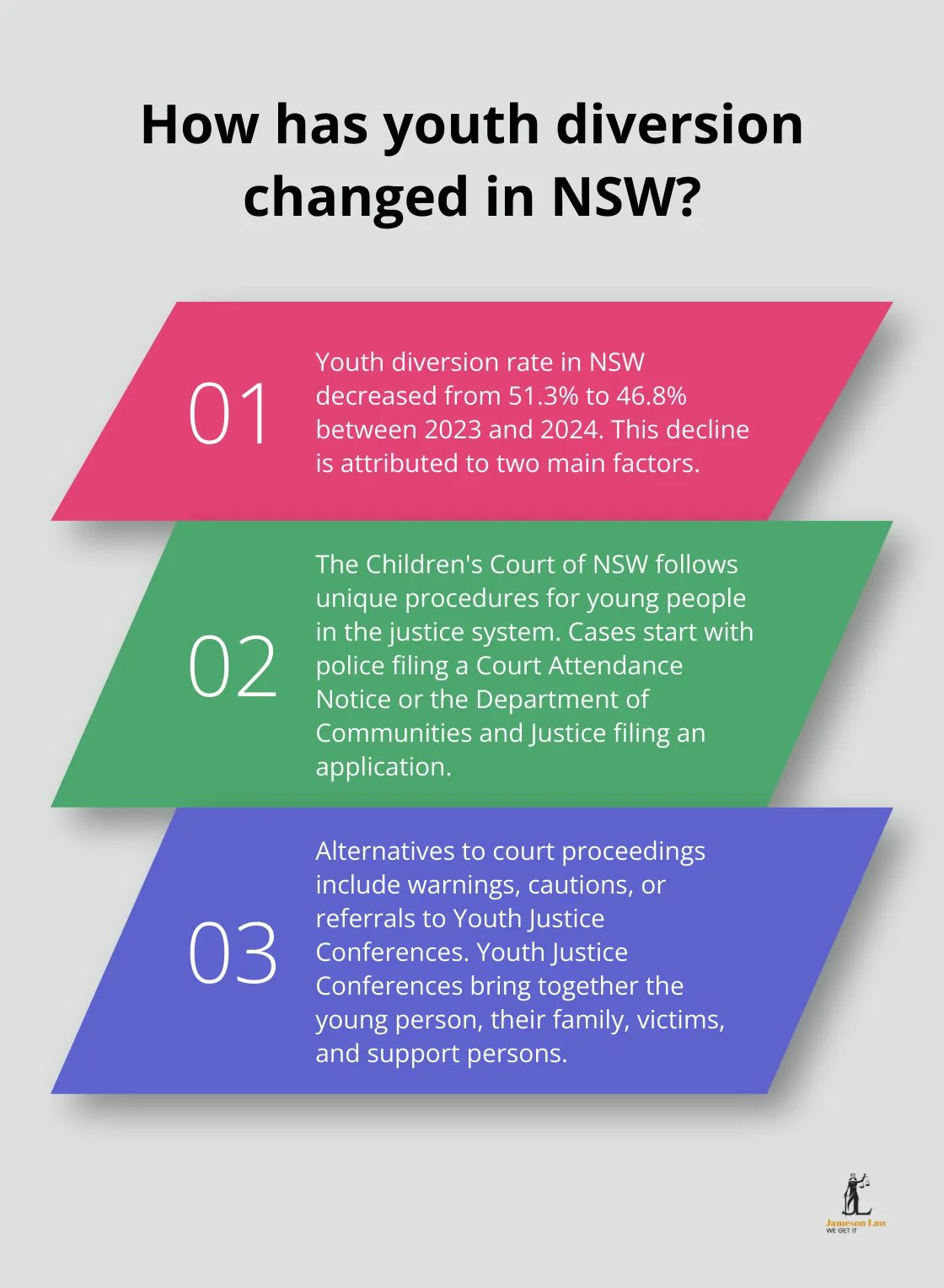
Youth Justice Conferences serve as an alternative to court proceedings, bringing together the young person, their family, victims, and support persons to discuss the offence and develop an outcome plan.
Protecting Young People’s Rights
The Children’s Court prioritises the rights and welfare of young people. Some key protections include:
- Closed court proceedings to protect privacy
- Restrictions on publishing identifying information about young people involved in court matters
- Access to legal representation and support persons during proceedings
- Consideration of a young person’s age, maturity, and circumstances in decision-making
These processes and protections form the foundation of the Children’s Court system. The next chapter will explore the sentencing options and outcomes available in the Children’s Court, providing insight into how the court balances accountability with rehabilitation for young offenders.
How Does the Children’s Court Sentence Young Offenders?
Sentencing Principles in the Children’s Court
The Children’s Court of NSW prioritises rehabilitation over punishment when sentencing young offenders. This approach recognises the higher capacity for change in young people and aims to guide them towards positive life choices. Participants in the conferences, including victims and offenders, have reported positive experiences, with the likelihood of future offending reduced.
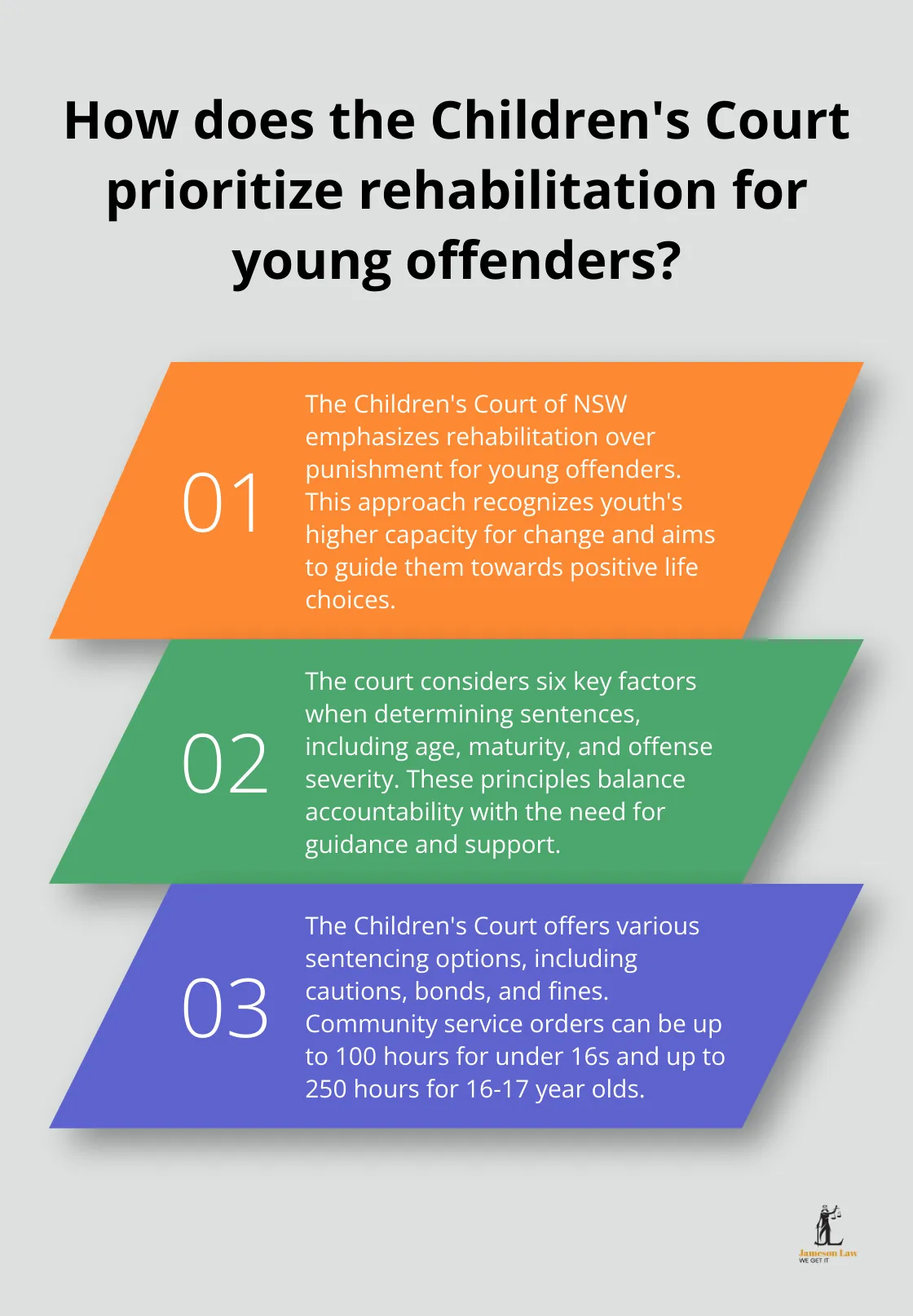
The court considers several key factors when determining sentences:
- The young person’s age and level of maturity
- The seriousness of the offence
- Any prior offences
- The impact on the victim
- The young person’s circumstances and background
- The potential for rehabilitation
These principles balance accountability with the need for guidance and support. The court addresses the underlying causes of offending behaviour while ensuring community safety.
Available Sentencing Options
The Children’s Court has various sentencing options to tailor responses to each case:
- Dismissal with a caution
- Good behaviour bonds
- Fines (maximum $1,100)
- Probation orders
- Community service orders (up to 100 hours for under 16s, up to 250 hours for 16-17 year olds)
- Control orders (detention in a youth justice centre, maximum 2 years)
Diversion and Alternative Programs
The Children’s Court emphasises diversion programs and alternative sentencing options. These programs address the root causes of offending and provide young people with support to make positive changes.
The Youth Justice Conference program is a key initiative. This restorative justice approach brings together the young offender, their family, victims, and community members to discuss the offence’s impact and develop an outcome plan.
The Youth Koori Court provides culturally appropriate interventions for Aboriginal and Torres Strait Islander young people. This specialised court involves Aboriginal Elders in the process and focuses on addressing underlying issues such as substance abuse, homelessness, and disconnection from culture.
Appeals Process
Young offenders have the right to appeal decisions made by the Children’s Court. Appeals must be lodged within 28 days of the original decision and are typically heard in the District Court of NSW.
The appeals process reviews the original decision, considering factors such as:
- Errors in law
- Severity of the sentence
- New evidence that has come to light
Appealing a decision can be complex, and seeking legal advice is important. Legal professionals can provide expert guidance to young people and their families considering this option.
Final Thoughts
The Children’s Court of New South Wales plays a vital role in our state’s justice system. It provides a specialized approach to legal matters involving young people, focusing on rehabilitation and accountability. This court shapes the futures of youth offenders by offering opportunities for growth and positive change.
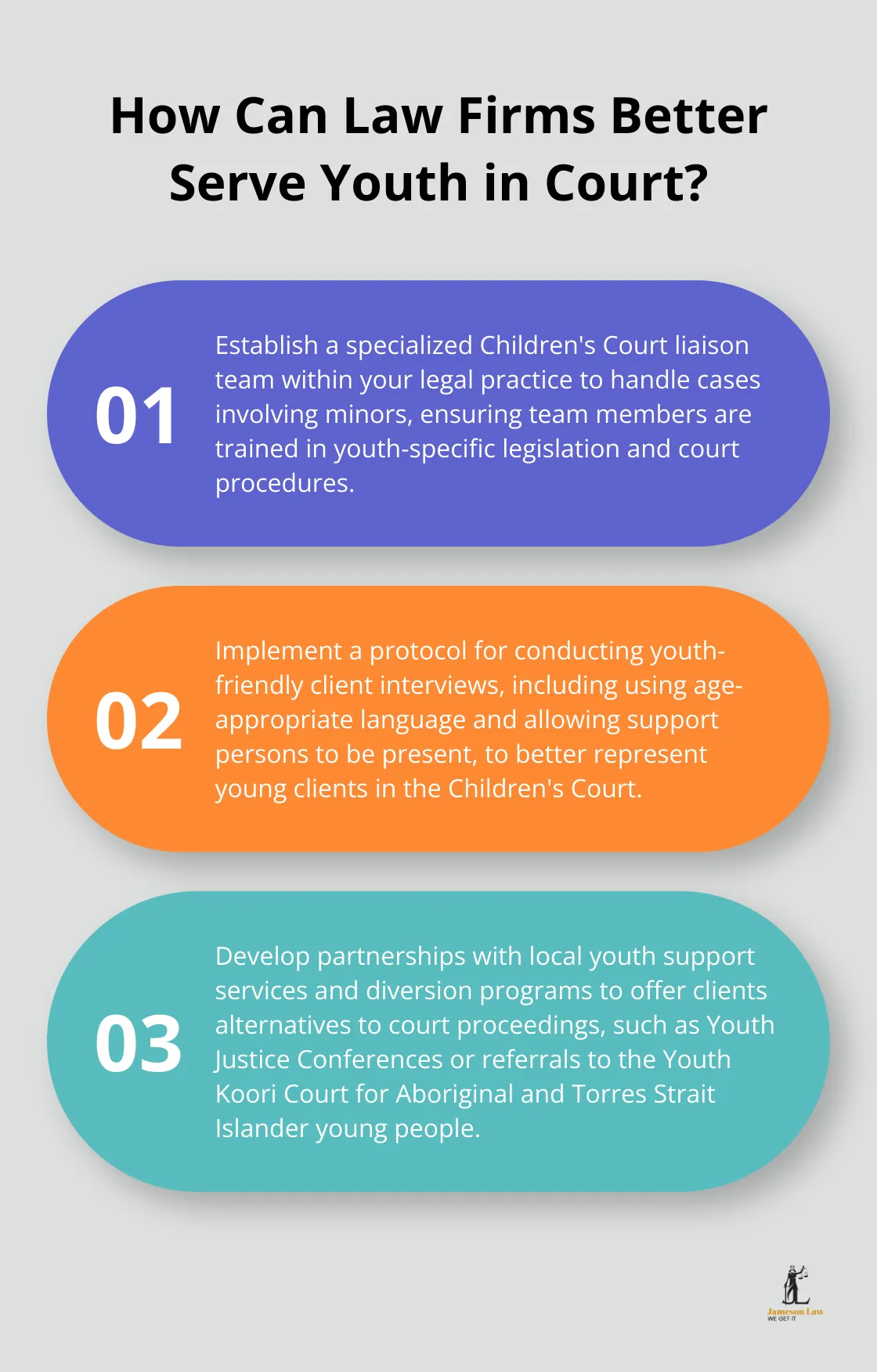
The Children’s Court faces challenges such as addressing the overrepresentation of Aboriginal youth and improving access to support services. Continued training for court staff and effective implementation of diversion programs remain priorities. The NSW Department of Communities and Justice website and Legal Aid NSW offer valuable resources for those seeking information or legal support.
At Jameson Law, we understand the complexities of the Children’s Court system. Our experienced lawyers provide expert legal support to young people and their families. We offer tailored advice and representation across various areas of law, including criminal matters handled by the Children’s Court.



